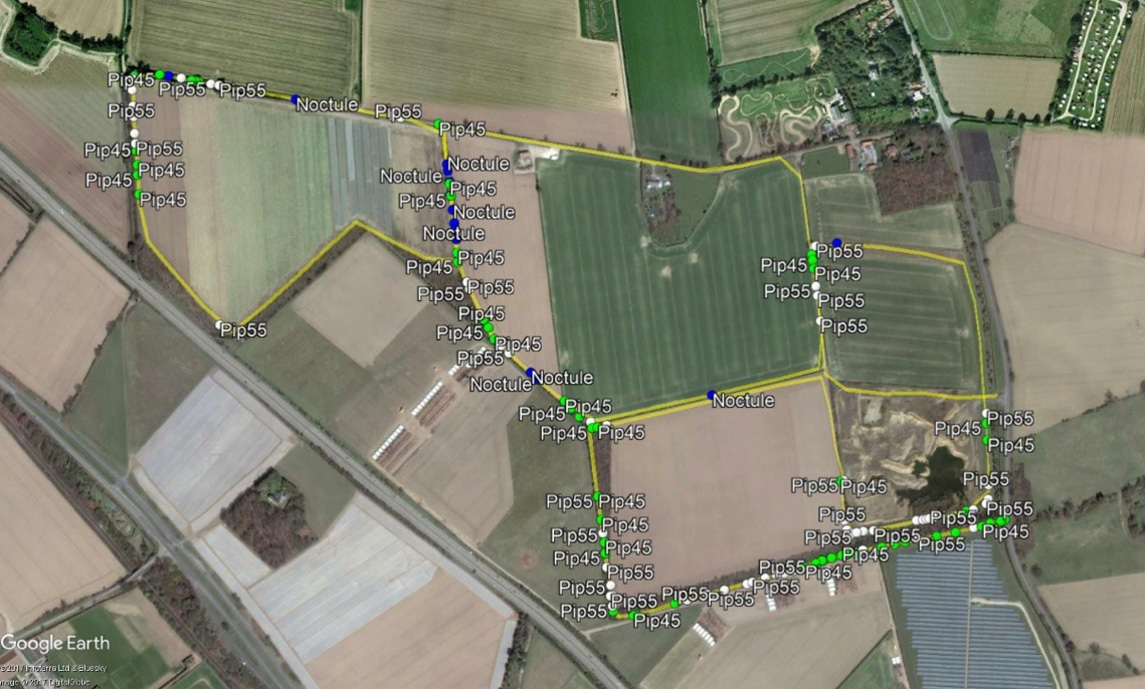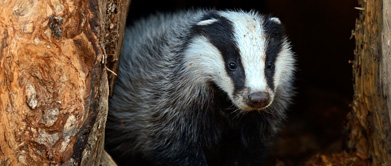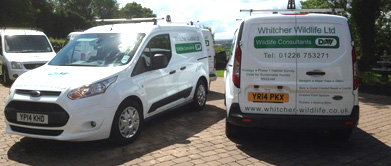Bat Surveys By Whitcher Wildlife
Whitcher Wildlife Ltd has experience in all aspects of bat surveying and mitigation and most of our team hold licences for surveying and handling bats throughout England, Scotland and Wales. One of our team is also registered under the Natural England Bat Low Impact Class Licence (BLICL).
Surveys for bats can take many forms with the type of survey appropriate to the site being dependent various factors.
Below is an outline of some of the survey techniques that can be used for bats although our team will specifically advise what will be required, based on the site and the proposed works, and will design a survey methodology to suit. All of our surveys are carried out in accordance with Bat Conservation Trust Good Practice Guidelines.
The findings of our bat surveys will be prepared into a comprehensive report outlining the survey findings, evaluating the impacts of any proposed works and making any recommendations necessary.
Daytime Inspection Surveys
Daytime bat surveys are the initial type of survey carried out on a site to assess the features present and the potential for bats to use the site for roosting, foraging or commuting. Initial daytime surveys can be carried out an any time of year and will require access to all areas of the site, including any buildings or structures present, to ensure that all areas of the site are accurately assessed and that any existing bat field signs are identified.
Our team are experienced in carrying out daytime bat surveys of all types of site and carry a range of equipment that will allow sites to be safely accessed and an accurate assessment made. We also have surveyors trained to work in confined spaces for sites where this is required.
Dusk Emergence or Dawn Swarming Bat Surveys (Bat Activity Surveys)
Where an initial bat survey identifies existing bat field signs or the potential for roosting bats to be present more specific dusk emergence or dawn swarming surveys are required to accurately assess the bat activity on the site. Dusk emergence and dawn swarming bat surveys must be carried out when bats are active, optimally between May and August, although some survey work can extend beyond this, and require sufficient surveyors and additional equipment to ensure all areas of potential are accurately covered.
Our team are experienced in planning and carrying out dusk emergence and dawn swarming bat surveys. We have a range of equipment that will be used during surveys to ensure complete coverage of the site whilst reducing the costs by limiting the number of surveyors required. The equipment we hold includes a range of hand held and static bat detectors (BatBox Duet, Anabat SD1 & SD2, Anabat Express and Anabat Walkabout) and video cameras with purpose built infrared lighting units.
Bat Activity or Transect Surveys
Where an initial bat survey identifies foraging and commuting potential for bats further bat transect surveys may be required to accurately assess the activity on and around the site. Transect surveys require routes around the site to be patrolled at various times throughout the season recording the bat species present and any foraging and commuting activity. The surveys also require bat activity to be monitored at several locations per transect route for a period of no less than five consecutive days.
Our team are experienced in carrying out bat transect surveys and will design a transect route appropriate to the site in question. The route will be walked, or driven if appropriate, at the required intervals throughout the season. During each survey the surveyor will record the bat activity visually and will also record the activity using an Anabat SD2 bat detector with GPS tracking or an Anabat Walkabout. The surveyor will also erect Anabat Express static recording units in appropriate locations around the site, which will be retained in position for the required period and then collected.
All recordings will be analysed using Analook or Anabat Insight computer software to show the bat activity during each survey, which will build into an accurate picture of the bat activity on the site throughout the season.

Tree Inspection Surveys
Where trees are identified on a site that are assessed as providing suitable roosting opportunities for bats, either through their size and age or through specific ‘Potential Roost Features’ (PRF) there may be a requirement to further assess the trees to establish whether roosting bats are present. Confirming the presence or absence of bats in trees using dusk emergence or dawn swarming surveys can be difficult, inaccurate and time consuming due to the complexity of tree structures and the presence of leaf cover making it difficult to identify the location that bats emerge from. Aerial tree inspections are a good starting point for tree assessment with the surveys allowing a number of trees to be accurately assessed in a single day.
We have two licenced surveyors trained to ‘City & Guilds NPTC Level 2 in Tree Climbing and Aerial Rescue’. The surveyors will assess each tree to ensure it is safe to climb. Where safe to do so the climbers will inspect all areas of the tree for suitable PRF. Each PRF will be inspected using an endoscope to look for bats, bat field signs or the suitability of the PRF to support roosting bats.
Following the climbed survey a thorough assessment of any features that require additional dusk emergence and dawn swarming surveys can be made allowing any additional surveys to concentrate on the areas of potential.
Hibernation Surveys
If buildings, structures or other features on a site are assessed as providing suitable opportunities for hibernation further surveys may be required during the winter months to accurately assess whether hibernating bats are present. The surveys will usually take the form of visual inspections of suitable features followed by static monitoring within the structure to identify bats during milder periods when they become active.
Our team are experienced in assessing sites for features suitable for hibernation and hold a range of equipment suitable for static recording within potential hibernation sites. We also have several surveyors trained to work in confined spaces if this is required to access structures.
Contact Now
